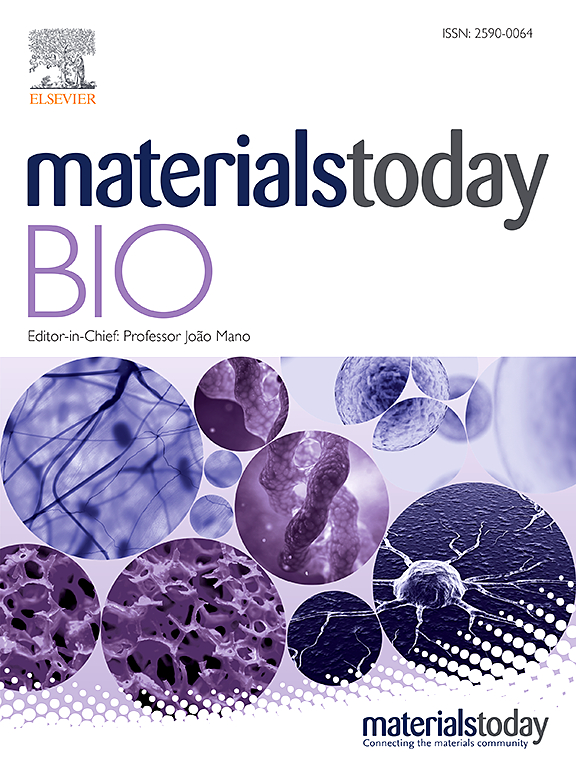Bi-phasic integrated silk fibroin/polycaprolactone scaffolds for osteochondral regeneration inspired by the native joint tissue and interface
IF 8.7
1区 医学
Q1 ENGINEERING, BIOMEDICAL
引用次数: 0
Abstract
Osteochondral scaffolds designed with bi-phasic and multi-phasic have typically struggled with post-implantation delamination. To address this issue, we developed a novel integrated scaffold with natural and continuous interface and heterogeneous bilayer structure. Through layer-by-layer wet electrospinning, two-dimensional (2D) bi-layer integrated membranes of silk fibroin (SF) and polycaprolactone (PCL) were fabricated. These membranes were then transformed into three-dimensional (3D) scaffolds using a CO2 gas foaming technique, followed by gelatin coating on the osteogenic layer to afford final bi-phasic porous scaffolds. In vitro studies indicated that the 3D scaffolds better-maintained cell phenotypes than conventional 2D electrospun films. Additionally, the 3D scaffolds showed superior cartilage repair and osteoinductivity potential, with increased subchondral bone volume and reduced defect area in rat osteochondral defects models at 12 weeks. Taken together, these gas-foamed scaffolds were a promising candidate for osteochondral regeneration.
求助全文
约1分钟内获得全文
求助全文
来源期刊

Materials Today Bio
Multiple-
CiteScore
8.30
自引率
4.90%
发文量
303
审稿时长
30 days
期刊介绍:
Materials Today Bio is a multidisciplinary journal that specializes in the intersection between biology and materials science, chemistry, physics, engineering, and medicine. It covers various aspects such as the design and assembly of new structures, their interaction with biological systems, functionalization, bioimaging, therapies, and diagnostics in healthcare. The journal aims to showcase the most significant advancements and discoveries in this field. As part of the Materials Today family, Materials Today Bio provides rigorous peer review, quick decision-making, and high visibility for authors. It is indexed in Scopus, PubMed Central, Emerging Sources, Citation Index (ESCI), and Directory of Open Access Journals (DOAJ).
 求助内容:
求助内容: 应助结果提醒方式:
应助结果提醒方式:


